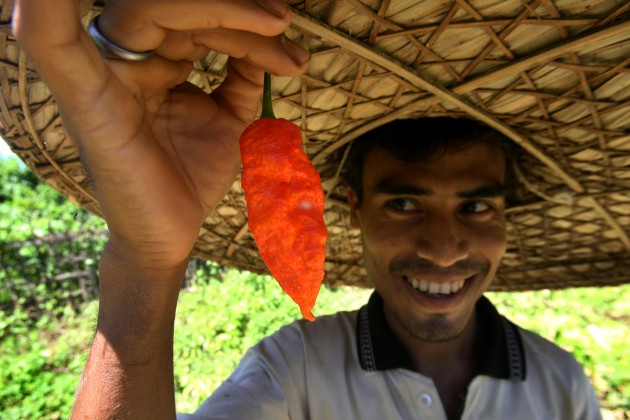
Today’s dispatch from comes from Nagaland, in the north of India. Mary Roach from the Smithsonian Magazine visited a pepper-eating contest there and reports on the science of eating spicy peppers.
First, the video:
The contestants here are eating Naga King Chilis, often ranked as the world’s hottest. These guys are pros:
Competitors have 20 seconds to eat as many chilies as they can. Peppers must be chewed at least three times, to ensure the release of the pain-causing ingredient; the highest concentration of capsaicin is in the lining of the pepper—its placenta—and the seeds. (The chili plant, like any good mother, is protective of its offspring.)
The video shows that while the chili-chompers are uncomfortable, no one howls in pain. We know that these peppers can do that though — a quick YouTube search and the photos on the Smithsonian piece are proof of that. So what accounts for the range of people’s tolerance? Practice, more than anything.
Some of it, of course, is genetics. Just as the number and density of taste receptors varies from tongue to tongue, so does the pain receptor count. (But not in a correlative way; so-called supertasters are not necessarily more sensitive to capsaicin.) According to [researcher Bruce] Bryant, tolerance is more built than born. Just as bagpipes and muskets may damage auditory nerves, capsaicin gradually destroys the pain receptors that respond to it. Bryant gives the example of Mexican children introduced to capsaicin as young as 4 or 5, in the form of chili candies. By the time they’re adults, their receptor load has been devastated. “What would scorch your palate off is a pleasant burn to them.”
